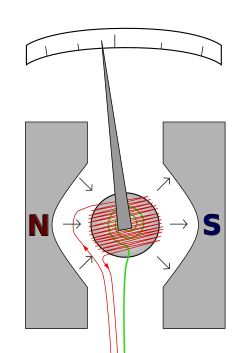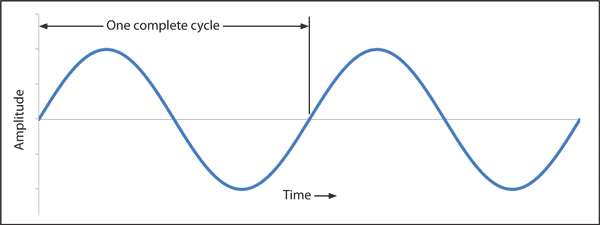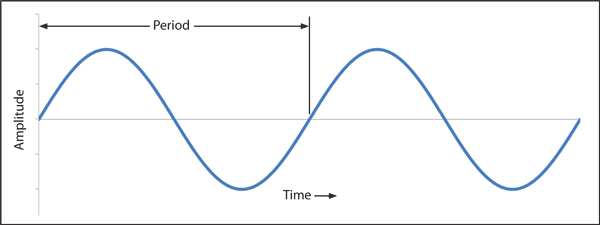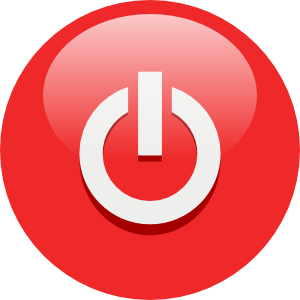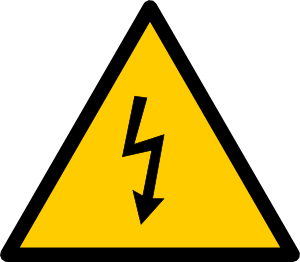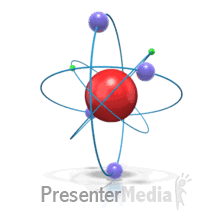Power is a term which am sure we use in our day to day life and term has different meanings in Politics, Physics, Maths, etc. We are more interested here in what power means in Electricity. So to do that we must first of all understand the general meaning of power, in physics and eventually in Electricity.
If we were to look up the meaning of the word Power in a Dictionary we would find the meaning as
"
the ability to do or act; capability of doing something or accomplishing something".
In physics power would mean "
the rate at which energy is transformed, used, or transferred". We can represent power as P=W/T OR P=E/T, here P=Power, W=Work, E=Energy and T=Time. So as far as SI units is concerned units for power is Joules which is for energy per unit time in seconds. So P=Joules/Second. This is what is known as WATTS. So Unit of Power is Watt. Watt can also be represented as Kilowatts(KW), Megawatts(MW), etc. 1KW=1000 watts and 1MW = 1000,000 watts.
Now in terms of electricity we would define Power as "
the rate at which electric energy is transferred in an electrical circuit". As explained in my previous post it is Generators which produce this power. The SI unit of power in terms of electricity remain the same as that in physics which is Watts.
In my previous post i have explained the meaning of current and voltage in terms of cause and effect. We must always remember that current is a measure of moving electrons or charge per unit time and voltage is what makes these electrons move.
Now what has Power got to do with all this?
Answer to this question will be Power has got everything to do with all this. It is actually voltage and current which makes Power.
In electricity P=VI, i.e. Power is voltage multiplied by current.
Now at this point is becomes very important for us to once again go back to school and recall all about Inductors ,Capacitors and Resistors.
BACK TO SCHOOL
INDUCTORS - Inductor in simple terms is simply a coil of wire. As current is made to pass through this coil of wire it produces a magnetic field which is responsible for storing energy. Let's take a very simple example, if we were to put an inductor in a simple electric bulb circuit then the bulb would stay lit till the magnetic field around the inductor dies out, which is making the flow of current to still persist even after switching off the current i.e simply switch off the switch. Inductance is a term which is used to define that phenomenon whereby an EMF is generated in a closed circuit due to change of flow of current which occurs by placing a coil in the circuit. Inductance is directly proportional to the number of turns in the coil. Inductance also depends on the radius of the coil and also on the type of material around which coil is wound.
The SI unit for measuring Inductance is HENRY.
CAPACITORS - A capacitor comprises of 2 conductors which are separated by a dielectric material of uniform thickness. Dielectric material is usually an insulator. A capacitor is something which stores energy in an electrical field and releases it in the electrical when required. Capacitance is a term which is used to define how much charge a capacitor can hold. The amount of charge a capacitor can hold depends on the amount of voltage that is applied. If we double the voltage than a capacitor can hold twice the charge. Capacitance in simple terms can also be said charge per volt a capacitor can hold. SI unit for capacitance is FARAD(F). Therefore Capacitance is given by C=Q/V, where C=Capacitance, Q=Charge, V=Voltage difference between capacitor plates.
RESISTORS -As the name suggests an resistor is an electronic component which resists the flow of current in an electric circuit. A Resistor is responsible for maintaining a constant relation between Voltage and Current. Resistors usually decrease the voltage and as a result decrease the current in an electric circuit. The amount of electric current which is absorbed in a resistor is called Resistance and the SI unit is OHMS.
Relation between voltage, current and resistance is given by ohms law which states R=V/I. Where R=Resistance, V=Voltage, I=Current.
In my last post we have learnt about AC and DC wave forms. (Please note that we are mainly interested in AC wave forms). Voltage and current in an AC circuit are sinusoidal in nature. This means that the amplitude of voltage and current changes over time. Now that we have learnt that power is equal to product of voltage and current, and therefore as a result power is maximized when voltage and current are lined up with one another i.e peaks and the zero points on the wave form are lined up with one another.
 |
| Figure shows voltage and current sinusoidal waveform |
Now as the figure above shows, in such a situation Voltage and Current are said to be in phase with one another. Two waveforms apart from being in phase with one another can be
OUT OF PHASE or
PHASE SHIFTED when current and voltage do not match from point to point.
So what makes this phase shift?
It is Resistors, Conductors and Inductors which are responsible for this change of phase. Each of these components have a different effect of the phase shift between voltage and current.
Let's now take a look at the effect of each component on voltage and current waveform.
- RESISTOR - A resistor causes no shift between current and voltage waveform.
Power that is resultant of a purely resistive load is called TRUE POWER. It is actually this power from generators that is responsible for driving our motors on board or will drive a circuit. This power is measured in Watts (W). In a way we can say that True Power is the desired outcome of an electrical system.
Recalling what we have stated earlier, P=VI and as per ohms law we now know that R=V/I or V=RI or I=V/R. Now combing these two equations we will get.
P=I^2R or P=V^2/R (I square or V square), this is what is True Power.
2.
CAPACITOR AND INDUCTOR - A capacitor or an inductor will cause a 90 degree phase shift between voltage and current. The resulting power will have a value of ZERO every time current or voltage reaches a zero value as Power is the product of Voltage and Current. As the value of power is zero it simply means that even though power is being generated still no work is being done. This type of Power is called REACTIVE POWER. True power is actually doing all the work while reactive power is taking away from power and as a result making True power to work more to get the job done. Reactive power is measure as REACTIVE VOLT-AMPS (VAr).
A capacitor in an AC circuit will cause the voltage to LAG current by a phase angle of 90 degrees and as result will introduce a Negative reactive power.
An Inductor in an AC circuit will cause the voltage to LEAD current by a phase angle of 90 degrees and as a result will introduce a Positive Reactive Power.
We can also say that Capacitors generate reactive power and Inductors consume reactive power.
Having learnt True and Reactive power there is one more Power that we must understand which is called the
COMPLEX POWER/APPARENT POWER. Complex power is the vector summation of True and Reactive power and Apparent power is the
Magnitude of complex power. Let's now take a look at Power Triangle.
Vector summation is simply determined by the use of Pythagoras theorem as we have studied in our school days. Apparent power is measured in Volts.Amps (VA) and so is complex power.
Now here as S is the Apparent power, Q is the reactive power, P is the total power
Therefore S= Sq. root of Q^2 + P^2
Let's recall what we have learnt so far
P= True power that performs work measure in (W) Watts.
Q= Power that does not perform work (sometimes called wattless power) measured in VAr (volta amp reactive)
S= Complex power is the vector summation of both True Power and Reactive Power measured in VA(Volt Amps)
/S\ - Apparent power is the magnitude of the complex power measure in VA (Volt Amps)
= Phase Angle. This is the angle which is used to describe the phase shift between voltage and current. Larger the phase angle greater the reactive power generated in the system
As we have learnt that Apparent power is the vector summation of True power and Reactive power, therefore it simply means that both magnitude of the true and magnitude of the reactive power together with the phase shift between the voltage and current affect the apparent power value. Apparent power is used to describe the total power delivered to a load.
What is Power Factor?
Ratio between real power and Apparent power is termed as Power Factor. This ratio represents the Cosine angle in a power triangle. This means

= REAL POWER/APPARENT POWER
Power factor is the practical measure of the efficiency of a power distribution system.
Power factor is 1 when the voltage and current are in phase. This happens only when the load is purely resistive. It is zero when the current leads or lags the voltage by 90 degrees. This happens when the load is inductive or capacitive. So power factor is always in the range of 0 and 1. Loads with lower power factor are inductive i.e. Power factors is lagging and loads with higher power factor are capacitive i.e power factor is leading. Power factors are usually leading or lagging to show the sign of the phase angle of current with respect to voltage.
The word lagging or leading simply implies that it is current which is lagging the voltage or leading the voltage.
Alternator sets are usually rated in kVA at 0.8 power factor lagging. This means that alternators are rated in terms of Apparent Power. Let's take a simple example of what this 0.8 means here.
If we are said that 1000 kVA is an alternator output than the true power output or Engine power output is=1000 x 0.8 = 80 KW.
Let's now take a look at what happens when we have the following conditions and answer this question,
WHY 0.8 POWER FACTOR LAGGING IS CHOSEN?
Effect of power factor on engines kVA when engine is designed for 0.8 lagging
- if the lagging power factor is less than 0.8 = If we have a power factor LESS than 0.8 there will be heating of the rotor winding at 100% of alternator kVA output.
- if leading power factor results, in alternator, stator end iron heating occurs and the alternator automatic voltage control system becomes stable
Effect of power factor on engines KW when engine is designed for 0.8 lagging
- Lagging power factor is greater than 0.8 = If we have a power factor MORE than 0.8 than engine will not have sufficient KW to power the alternator to 100% of its kVA rating
- Lagging power factor is smaller than 0.8 = If we have a power factor LESS than 0.8 than than engine will have surplus KW to power the alternator to 100% of its kVA rating
Also please note that a 0.8 power factor is common and relatively inexpensive, however it is possible to design an alternator with any power factor.
At the end of this post i can only say that always remember
- Apparent power is the combination of both Reactive power and True power.
- True power is a result of resistive components
- Reactive power is a result of capacitive and inductive components
- It is reactive power which is used to maintain the voltage
- If reactive power increases the voltage increases and if reactive power lowers voltage reduces








